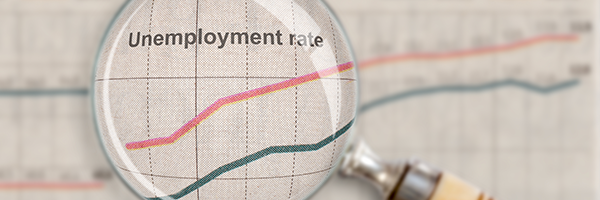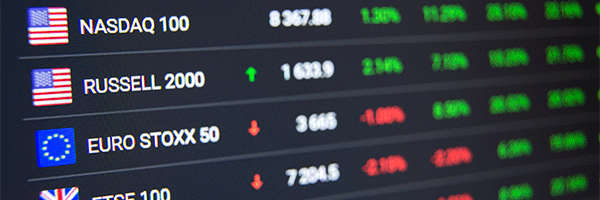Short Term

July 4, 2023 | Daily JAM, Morning Briefing, Short Term |
Right now economists are projecting that the U.S. economy didn’t slip into a recession in the second quarter that ended on June 30. But those same forecasts are looking for a further slowdown in economic growth in the quarter.
On July 3 the GDPNow forecast from the Atlanta Federal Reserve Bank put second quarter growth at an adjusted annual rate of 1.9%. That’s down from the model’s 2.2% forecast on Jone 30. And that rate of growth would be a further deceleration from the 2.0% growth rate (that was an upward revision from a first estimate of just a 1.3% growth rate) in the first quarter and the 2.6% growth in the fourth quarter of 2020. The very recent downward revision in the GDPNow forecast is a result of a drop in private domestic investment growth to 8.8% from 10.4%.So now recession–good news–but a further slowdown in the economy–expected with the Federal Reserve raising interest rates. And a continued drop in company profits.

July 3, 2023 | Daily JAM, Morning Briefing, Short Term |
I think the Friday, July 7, jobs report for June will be decisive in the Federal Reserve’s Jury 26 decision to raise/not-to-raise its benchmark interest rates. The CME FedWatch Tool current calculates the odds of a 25 basis point in create at 86.2%. The Bureau of Labor will release the Employment Situation Report on Friday. Economists are projecting that the economy added just 200,000 jobs in June. In May the economy added 339,000 jobs. Economists product that the unemployment rate will hold steady 3.7%.

June 29, 2023 | Daily JAM, Morning Briefing, Short Term |
This morning all the way in New York I could hear the gnashing of teeth from Jerome Powell’s office at the Federal Reserve. “What do we have to do to slow consumer spending in the Untied States?” he cried after this morning’s economic data. Today the Commerce Department sharply raised its judgement on first quarter GDP growth. The last revision to the data showed the U.S. economy growing at a 2% annual rate from January through March. That was a huge step up from the 1.3% growth repoRrted in the previous GDP estimate.

June 28, 2023 | Daily JAM, Short Term |
Investors and traders have been riding a Goldilocks market that has rested on a belief that all news is good news. There are signs that belief is facing challenges that might, just might, lead to a replacement of Goldilocks with some other narrative. Right now, the golden child is still resting peacefully at the Three Bears’ house with a stomach full of “just right” porridge, but sentiment in the last week has at least been willing to countenance the possibility that some bad news is bad news. And, I can see a lurking suspicion in the market that may be in the weeks to come all news if bad news.

June 22, 2023 | Daily JAM, GNRC, Short Term, Volatility |
I’ve got major questions about Generac’s (GNRC) long-term growth. The company, the dominant player in the market for residential backup electric generators (with about 4 times the market share–or about 75% of the market–of its nearest competitor) faces big questions, in my opinion, about its long-term strategy and its ability to grab significant revenue in the clean energy market where it faces competition from larger companies, more established in the market, such as SolarEdge (SEDG) and Enphase (ENPH). But in the short run? Say, the next two or maybe three (at the outside) months, I say this is a stock that will ride summer storms and heat waves to gains. Especially, if as I project, the company delivers lackluster quarterly earnings when it reports on August 2, but gives very positive guidance for the next quarter or two

June 20, 2023 | Daily JAM, Morning Briefing, Short Term |
I expect the end of the second quarter to be volatile as two contrary trends battle it out to set market direction.

May 26, 2023 | Daily JAM, Short Term |
If negotiators reach a deal on resolving the debt ceiling crisis that only begins a process fraught with nailing-biting delays built into the legislative process. And opposition to the deal from progressive Democrats and ultra-conservative Republicans. Today, the stock market finished strongly higher on hopes that a deal that avoids a U.S. debt default is within reach. And on continued hyper-enthusiasm about anything vaguely touched by artificial intelligence. Next week, isn’t likely to show a smooth continuation of the upward trend. I’d expect headlines about disappointment with the deal and on the possibility that there aren’t enough centrist Democratic and Republican votes to pass the deal. I expect the deal to pass, eventually, but that doesn’t mean the market won’t chew its fingernails with worry on any particular day.

May 24, 2023 | Daily JAM, Short Term |
Three numbers caught my eye today as indications of where the financial markets are headed in the short term. I’m looking at the moves in the Russell 2000 small-cap index. In the CBOE S&P 500 Volatility Index ( VIX). And in the odds on interest rate increases from the Federal Reserve on the CME FedWatch tool.

May 22, 2023 | Daily JAM, Morning Briefing, Short Term |
Last week Federal Reserve chair Jerome Powell said that the Fed could hold off on another interest rate increase at its June 14 meeting. That comment wz one reason that the CME FedWath tool showed the odds of no increase at the meeting jumping to 82.6% on Friday, May 19. But today, Federal Reserve Bank of St. Louis President James Bullard and Neel Kashkari, head of the Minneapolis Fed said, essentially, that “could” doesn’t mean will. Bullard backed two more 2023 interest-rate increases and Kashkari said if the central bank pauses next month it should signal tightening isn’t over.

May 20, 2023 | Daily JAM, Short Term |
I expect more posturing, more attempts to extract leverage, and more blaming–but, in my opinion, no debt ceiling deal this week. The big question: “When does the stock market start to take the possibility seriously–unthinkable as it might be–that the United States could default on its debt.

May 16, 2023 | Daily JAM, Mid Term, Morning Briefing, Short Term |
The typical pattern is for households to run up credit card balances for holiday shopping and then for consumers to pay down credit card balances in the first quarter. That’s what happens in a healthy economy where consumers are living within their means and aren’t seeing family budgets stretched by high inflation. But that isn’t what happened in the first quarter of 2023. For the first time in 20 years, consumers added to their debt loads in the first quarter rather than paying down some of their fourth-quarter spending.

May 11, 2023 | Daily JAM, Short Term |
Shares of California regional bank PacWest (PACW) closed down another 22.7% today, May 11 after the bank disclosed it lost 9.5% of deposits last week. That took down many regional banking peers. For example, Zions Bancorporation (ZION) finished the day down 4.51% and Comerica (CMA) was lower by 6.76%. The SDPR S&P Regional Banking ETF (KRE) was down 2.48%.
But not all regional banks fell.














